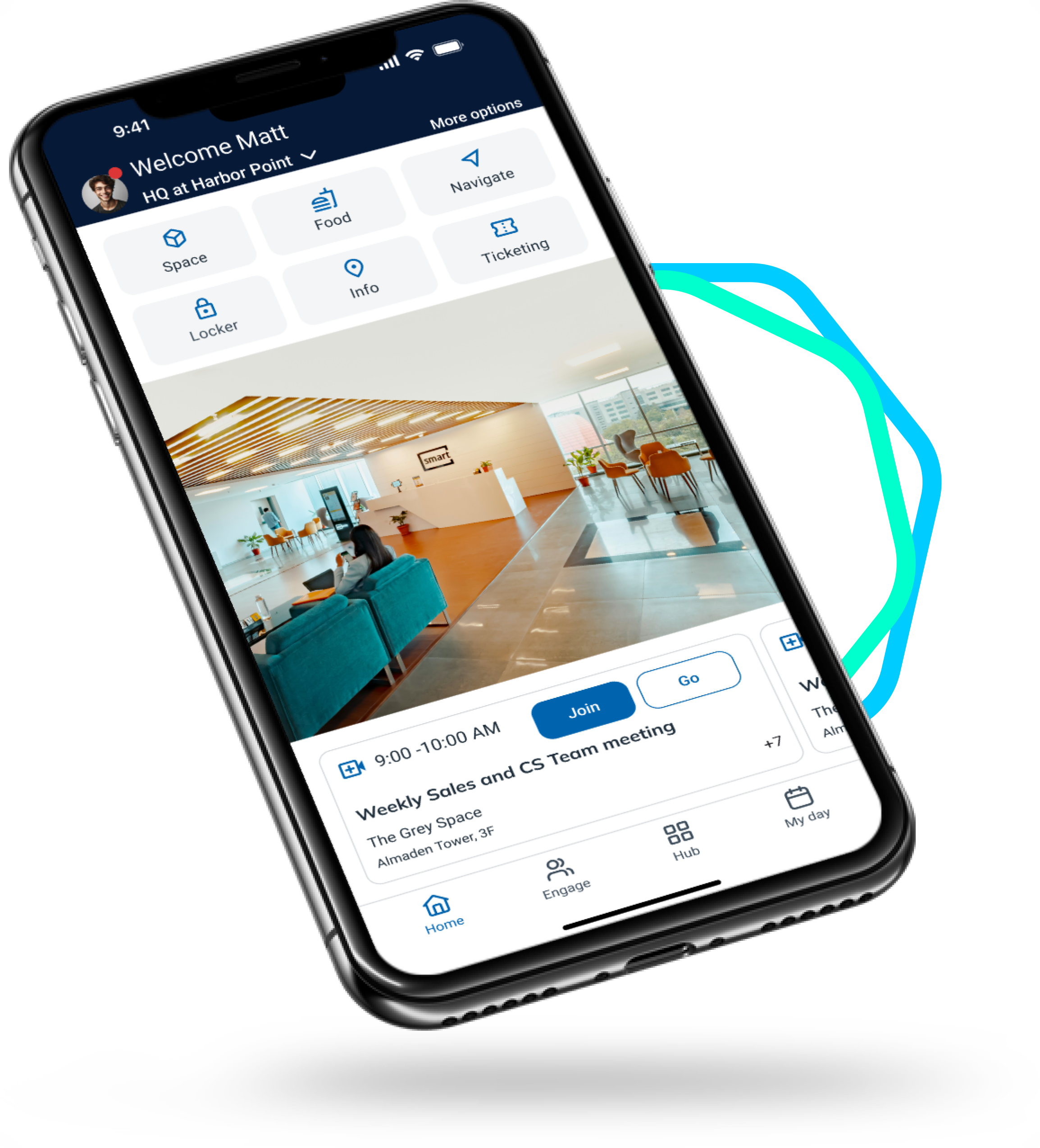
SaaS. A familiar term to many in the tech industry. Software as a service. Wait... but no, we're talking about Space as a Service - or rather SpaaS.
This relatively new outcrop of 'aaS' technology is surging in property tech. That's because the focus in workplace, campus, venue management, corporate real estate, you name it - has shifted to analyzing the space you have, maximizing and optimizing it for dynamic workflows and experiential journey.
Think of SpaaS as a vehicle for providing a suite of services to tenants to easily utilize their owned and shared workspace across digital connectivity, energy efficiencies, utilities, "hot desking", staffing, and other services typically needed to operate business.
Space(s) in real estate planning in the corporate sector are already underused. The model, over time, and company policy has become stagnant. Traditionally you get assigned a desk, within your department, and that's 'your' space for your tenure. Unless departments shift or move floors, or you yourself laterally make a move, your desk is your desk. The cafeteria is the cafeteria. The C-suite offices are just that. And the conference rooms are all baked into the overall floor plan of your organization.
But companies like Deloitte, Citigroup, Google and other tech giants are shifting this model to align with more dynamic workplace needs, where seating is 'unassigned' and employees choose whatever setting best supports the activity or task at hand.
Corporate campuses and corporate real estate professionals in recent years have begun to evaluate spatial environments to get a better understanding of how their space is being utilized to maximize ROI and improve the bottom line of venue and operations management.
Spatial Management Is About Demand and Supply
Demand of employees and their work environment are impacting the supply side. Because employee work regiments have become increasingly agile and mobile, so too are the spaces that support them. Rising remote workforces, and flexible schedules have diminished the need for cubicles, offices, and other stationary spaces that are reserved for a 40+ hour work week schedule where everyone is always in the office.
Now the 40+ hour work week hasn't changed, but when and where people leverage those 40+ hours has. Collaborative, online tools and mobile technologies have opened the door to 'on-the-go' and remote teleconferencing work duties that support movement and changing of space or work stations. Just yesterday, I jumped on a customer call/training session from my car. Powered up my laptop (while in park) and was good to go.
The demand now, is for renting or owning spaces where you can buy or configure the features and services most important to your organizations work environment. This translates to the supply of modular office spaces, a la cart offerings, and personalized utilities.
Because of this change property managers and corporate real estate managers have become more intertwined with focusing on workplace and user experience.
What To Do With Data Around Your Space(s)
When it comes to SpaaS, here are some high-level use cases you can leverage when evaluating your space and garnering deeper insights into it's usage.
- Occupancy Levels.
- Vacancies: Understanding underused or less frequented areas of your space can lead to reformatting of physical spaces or use cases to bring vigor back to that space, or eliminate it all together.
- Overpopulation: Knowing which areas, desks, floors etc are the most popular and in-demand should lead to inferring why and how you can create more spaces around your facility that mirror that model. Is it lighting, location to food, desk layout... what is leading to overpopulation?
- Peak Times and Down Times. Much like the usage of the space, timing also can help optimize collective or team building engagement touchpoints. If there are peak times that your space is being used, you can adjust company meetings or activities to not occur at that time because it is a peak for productivity. Similarly, in down times, you can find creative ways to fill a space during off-hours to bring more engagement back into the fold. Meditation anyone? How about a lunch & learn?
- Employee Empowerment. Your workforce benefits from a flexible work environment. Allowing them to choose their ideal work space, re-allocate their needs on a day to day, hour by hour basis should improve productivity and teamwork (i.e. using collaborative spaces for meetings, and moving to quieter zones when working independently). The absence or lessened rigidity of a rigorous work schedule and office or cubicle allocation leads to greater employee morale.
Technology-enabled structural changes in the corporate real estate marketplace, like mobile apps, digital signage, AI, and IoT are greatly aiding this shift to SPaaS environments and restructuring the way space is utilized.
Over time, property managers and real estate professionals managing a diverse portfolio will become more focused and dependent on delivering spaces that incorporate immersive user experiences into their physical properties and digital capabilities that overall provide the space and service most appropriate for the task at hand.
It's time to reimagine the opportunities that lie ahead!

.png)

.png)






